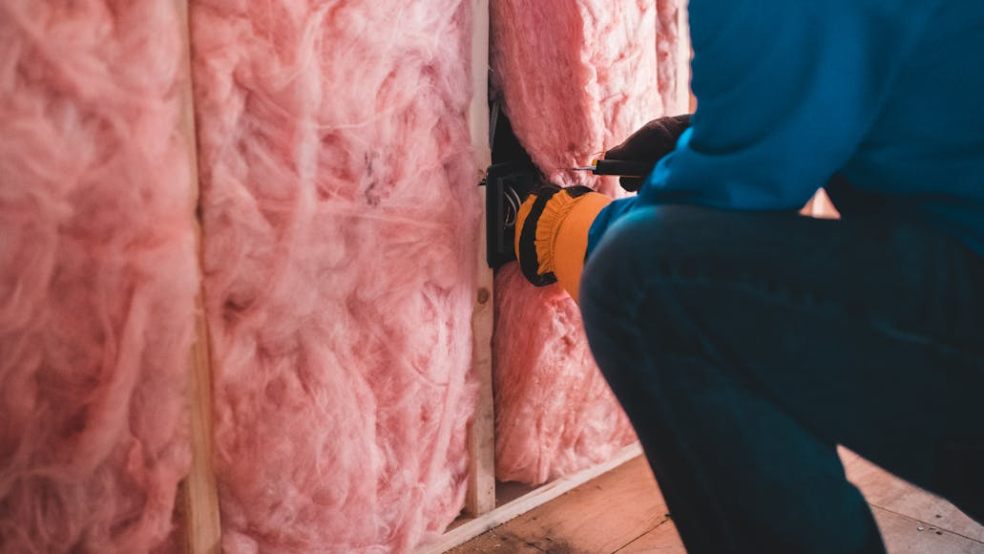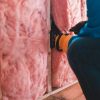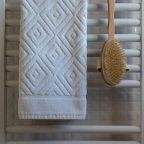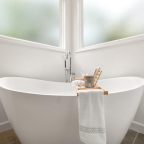
Best Materials for Internal Wall Insulation
Picking wall insulation for interiors is pretty much like choosing the perfect blanket.. How cosy do you want the house to be? Will Material A keep it warmer than Material B? Some wall insulation materials are better at warming the house than others. Which materials are we talking about? Let’s look at the commonly used ones.
-
Fibreglass
Given its popularity, you’ve probably come across fibreglass in one of its numerous forms.
Fibreglass works by slowing heat flow and trapping air molecules. It’s made of tiny glass fibres created from a combination of:
- Silica sand
- Soda ash
- Limestone
Additional ingredients often included in varying quantities are:
- Calcined alumina
- Borax
- Feldspar
- Magnesite
- Kaolin clay
- Nepheline syenite
After combining the ingredients in the correct amounts, the mixture is heated until it turns molten. It’s then poured into a spinning container with small perforations. The glass flows out via the holes, and manufacturers blast it using air to break it into discontinuous strands.
Advantages of Fibreglass
- It’s readily available. The raw materials used to make fibreglass are easy to obtain and process.
- It’s affordable. Low-cost materials and low production costs make fibreglass affordable.
- It’s fire-resistant. Fibreglass does not change its form when exposed to high temperatures. It also won’t ignite easily and is not a fire hazard when used to insulate walls.
Disadvantages
- Fibreglass can leave you itching. Always protect your hands with heavy-duty gloves when working with fibreglass.
- When inhaled, it can lead to respiratory system issues. To protect yourself, wear a mask to avoid breathing in the tiny fibres.
-
Rigid Foam Insulation Boards
These come in various forms, namely:
- Polyisocyanurate
- Expanded polystyrene
- Extruded polystyrene
- Polyurethane
Polyisocyanurate has the highest R-value per inch among the four. It also offers the highest moisture protection because it contains a built-in foil layer that serves as a vapour barrier.
Each panel usually has three layers to ensure high insulation ability, with the outermost layer consisting of paper. Install rigid foam boards in places where you desire thermal protection and tight moisture prevention, as they serve both purposes quite well. This can be on:
- Walls and cavity walls
- Roofing
- Floors
Here are more reasons to install rigid foam:
- You can resize, shape and install them with ease
- They offer high resistance to moisture
- They are durable
However, they are costlier than most wall insulation materials and can drive your construction expenses way up if you install them on a large surface area.
3. Spray Foam Insulation
A mixture of polyurethane and isocyanate, spray foam is a liquid that becomes foam-like when sprayed into a wall.
Advantages of spray foam
- It promotes energy efficiency. Because spray foam expands when applied, it blocks the flow of air completely, preserving heat within the wall and potentially lowering energy costs.
- Spray foam is effective at blocking drafts. It fills up any spaces inside the wall, making it impossible for cold air to penetrate. Use it in extremely windy areas to keep drafts from lowering room temperature.
- It’s good at blocking noise and, therefore, effective in sound-proofing rooms.
Disadvantages
It’s one of the most expensive wall insulation materials.
Once installed, it’s hard to remove if you need to make changes.
4. Cellulose Insulation
A sustainable insulation solution made from recycled waste paper, loose-fill cellulose insulation is surprisingly good at preventing heat loss. It’s also quite dense, a quality that allows it to block the movement of sound along walls. The high amount of mass means you can pack it nicely around piping and wiring so that few air pockets, if any, remain unfilled.
5. Mineral Wool Insulation
A fibrous product made from natural materials, mineral wool comes in two forms: rock wool and slag wool. Rock wool is processed from stone fibres, while slag wool comes from iron ore byproducts.
The compact metal and stone fibres make it difficult for water to seep through the material, making it a great choice for insulating water-prone surfaces.
Conclusion
Materials for wall insulation are as different as they are many. When selecting insulation for internal walls, consider the efficiency levels and noise reduction each material offers. Cost is another critical aspect to contemplate because you want to avoid materials that create a budget overrun.
FAQs
- Can rigid foam insulation boards be used on surfaces that require high structural strength?
Rigid foam boards are strong. Its weight-tensile strength ratio supports application on surfaces that require above-average structural strength.
- Can I use two different rigid foam boards at the same time?
You can layer similar boards to make your structure stronger, increase the insulation, or raise the R-value. However, using different foam boards may not yield similar results because each board has distinct properties.
- Is acoustic roll the same as mineral wool?
Acoustic roll is a type of mineral wool made from glass mineral wool, often sourced from recycled glass. It has many similar characteristics to mineral wool.

















